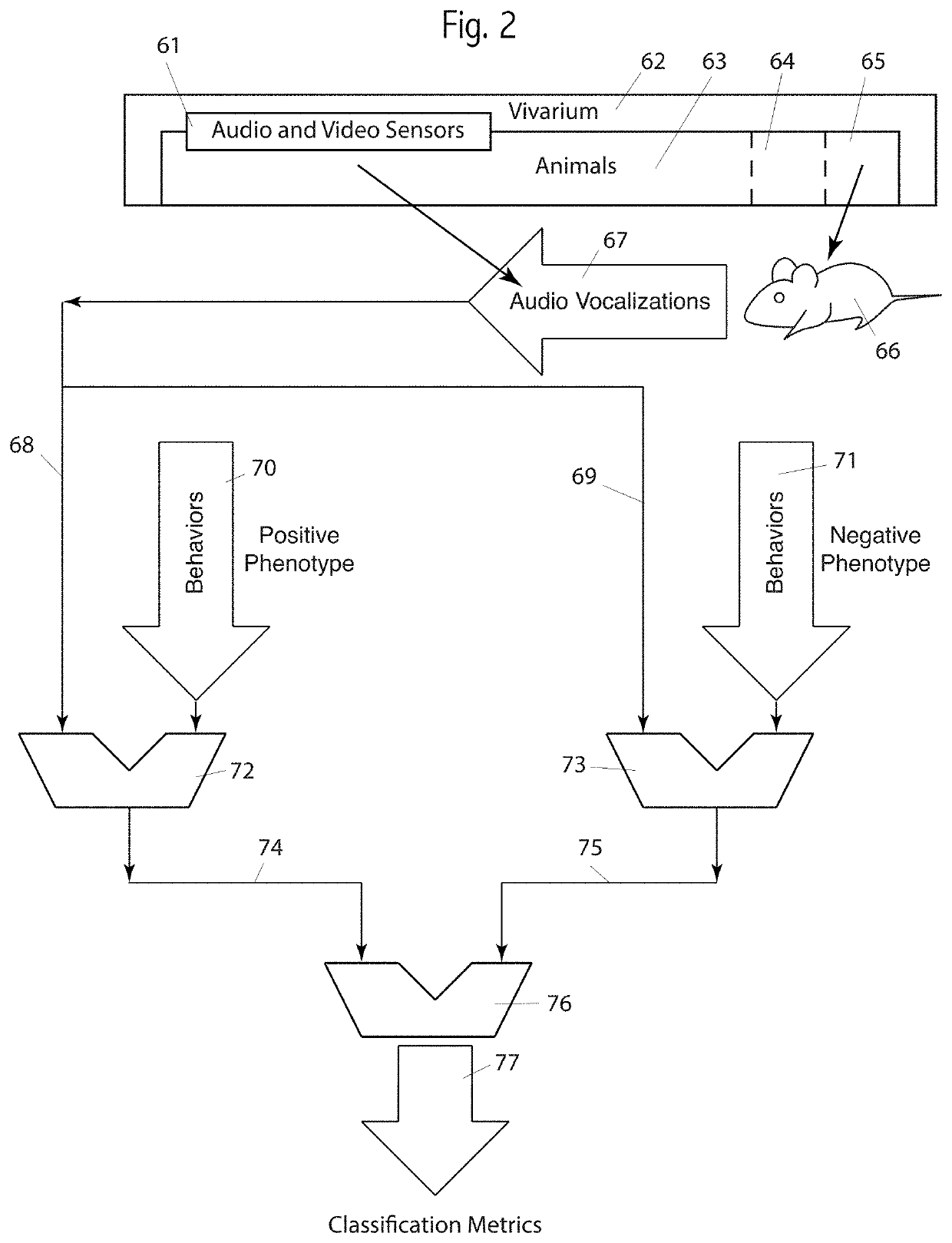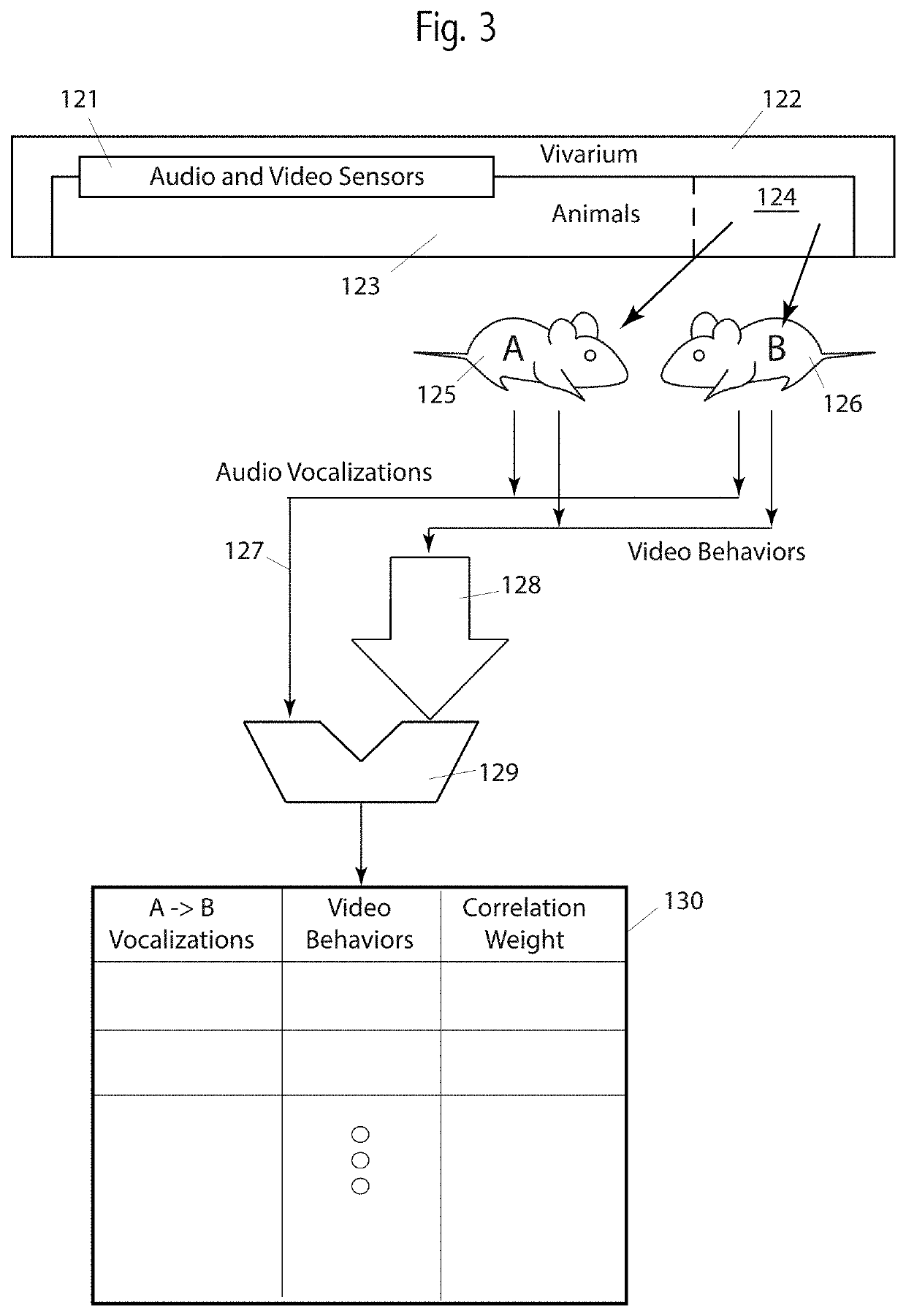Device and method of using rodent vocalizations for automatic classification of animal behavior
a technology of automatic classification and animal behavior, applied in the field of classification of rodent vocalizations, can solve the problems of missing figure data and detail in the original work, mechanical interference with the function of the organ or of the location, and inability to teach how
- Summary
- Abstract
- Description
- Claims
- Application Information
AI Technical Summary
Benefits of technology
Problems solved by technology
Method used
Image
Examples
Embodiment Construction
[0033]Turning now to FIG. 1, we see a schematic side view of a cage with sensors. The periphery of the cage, often constructed from clear plastic, is shown as 110 and 140, for the outside and inside surfaces respectively. The interior of the cage, ideally sterile, per the definition of sterile in this specification, is 145. Thus the sterile border is between 140 and 110. A bedding area is shown 300. 260 shows in three places clear areas at the top of the cage through which cameras 250 may view the inside of the cage, and through which visible light and infrared light, from LEDs 270, may enter the cage. Cages may be disposable or sterilized between studies. Ideally, and key to some embodiments, is that there are no electrical penetrations of the cage periphery, 110 and 140. Cameras, which may be still or video, monochrome, color or infrared (IR), multiple or single, are shown 250. 280 and 290 show respectively a microphone and speaker, which may be used for either ambient (vivarium) ...
PUM
 Login to View More
Login to View More Abstract
Description
Claims
Application Information
 Login to View More
Login to View More - R&D
- Intellectual Property
- Life Sciences
- Materials
- Tech Scout
- Unparalleled Data Quality
- Higher Quality Content
- 60% Fewer Hallucinations
Browse by: Latest US Patents, China's latest patents, Technical Efficacy Thesaurus, Application Domain, Technology Topic, Popular Technical Reports.
© 2025 PatSnap. All rights reserved.Legal|Privacy policy|Modern Slavery Act Transparency Statement|Sitemap|About US| Contact US: help@patsnap.com



